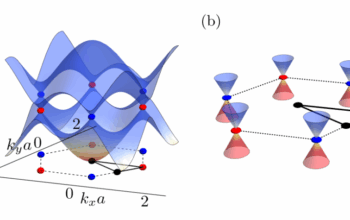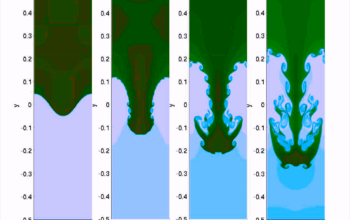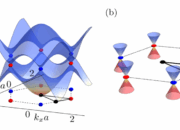The study of sound, often regarded as an ephemeral phenomenon, invites an exploration of its intricate physics with a profound metaphor: sound is akin to the ripples on the surface of a pond, created by a singular disturbance yet possessing the ability to traverse vast distances, influencing its environment in profound and often unnoticed ways. The essence of sound lies not just in its auditory characteristics but in its manifestation as a wave, a concept deeply rooted in the principles of physics.
At the core of understanding sound is the concept of wave propagation. Sound waves are mechanical longitudinal waves that necessitate a medium for transmission, be it gas, liquid, or solid. The process begins when a vibrating object, like the striking of a gong, displaces surrounding air particles. This displacement initiates a chain reaction, where adjacent particles are set into motion, creating areas of compression and rarefaction. The amplitude of these waves determines the loudness of the sound, while their frequency dictates the pitch. The interrelation between frequency and wavelength exemplifies a wavelength’s capacity to shape auditory perception, where higher frequencies yield higher pitches and lower frequencies produce deeper tones.
Now, let us delve into the fascinating nature of resonance—a phenomenon that can be likened to a dance between materials and waves. When an external force excites a system at its natural frequency, a dramatic amplification occurs, often resulting in a sound that resonates with vibrant intensity. This principle is vibrantly illustrated in the resonance of a gong. As the gong is struck, it vibrates at its fundamental frequency and produces overtones, creating a rich tapestry of sound. The interaction of these frequencies morphs into a unique auditory signature that is not only pleasurable but also deeply informative regarding the physical properties of the instrument itself.
The physics governing sound waves is further underscored by the Doppler effect, a phenomenon observed when there is relative motion between a sound source and an observer. This is akin to the changing storyline of a narrative; as a source moves towards an observer, the pitch appears to ascend, and as it recedes, the pitch diminishes. This effect underscores the contextual nature of sound and highlights how its perception can vary drastically depending on the observer’s position and speed relative to the source. The Doppler effect has profound implications, extending beyond mere acoustic phenomena to applications in astronomy, meteorology, and even medical imaging through the utilization of ultrasound technologies.
Another pertinent aspect of sound is its interaction with various mediums, a subject that reveals the complexity of acoustic impedance. As sound waves traverse from one medium to another—such as from air into water—they undergo refraction, altering their speed and direction. This principle is not merely a technical detail; it embodies the interplay between energy and matter, serving as a reminder of the interconnectedness of physical phenomena. As sound waves enter water, they travel approximately four times faster than in air, leading to intriguing auditory experiences for divers and marine life. Such differences illuminate how the properties of materials dictate the behavior of sound, echoing a broader scientific principle: the environment shapes the phenomena it contains.
Moreover, the perception of sound culminates in the intricate anatomy of the human ear. Sound waves enter through the ear canal, striking the eardrum and setting the ossicles—tiny bones—in motion. This mechanical transduction converts kinetic energy into neural impulses, ultimately interpreted by the brain as distinct sounds. The ear’s ability to discern pitch, loudness, and timbre reflects an exquisite evolutionary adaptation, enabling communication, navigation, and social interaction. The interplay of biology and physics here offers tantalizing insights into the development of auditory perception as a crucial aspect of human experience.
In parallel, it is essential to acknowledge the phenomenon of acoustics, which encompasses the study of sound behavior in various environments. The acoustics of a concert hall, for instance, is meticulously designed to enhance sound clarity and richness. Factors such as surface materials, shape, and size all contribute to the complex interplay of sound waves bouncing, reflecting, and filtering within a space. Architects and acousticians collaborate to create environments where sound blossoms, illustrating the profound influence of physical principles on artistic expression. Each intricate design transforms raw sound waves into an immersive experience, showcasing the unity of science and art.
Finally, let us reflect on the evolutionary significance of sound. From the primal roars of animals to the complex languages of humans, sound serves as a fundamental thread binding individuals within ecosystems. The communication of danger through alarm calls, the serene lullabies sung to infants, or the synchronization of mating calls among frogs exemplifies sound’s role in survival and reproduction. This multifaceted utility emphasizes the deeper implications of sound, extending beyond mere sensory input to encompass an entire ecological narrative.
In conclusion, the physics of sound emerges as a rich tapestry that interweaves the fundamental principles of wave dynamics, resonance, Doppler effects, and acoustics with the biological intricacies of human perception. Sound, akin to the gongs that reverberate through the air, encapsulates the interplay of nature and science, inviting us to perceive the world not only through our eyes but also through our ears. It is this symphonic universe of vibrations that enchants our senses and enriches our understanding of the cosmos, revealing the underlying beauty of the physical principles that govern our auditory experiences.











